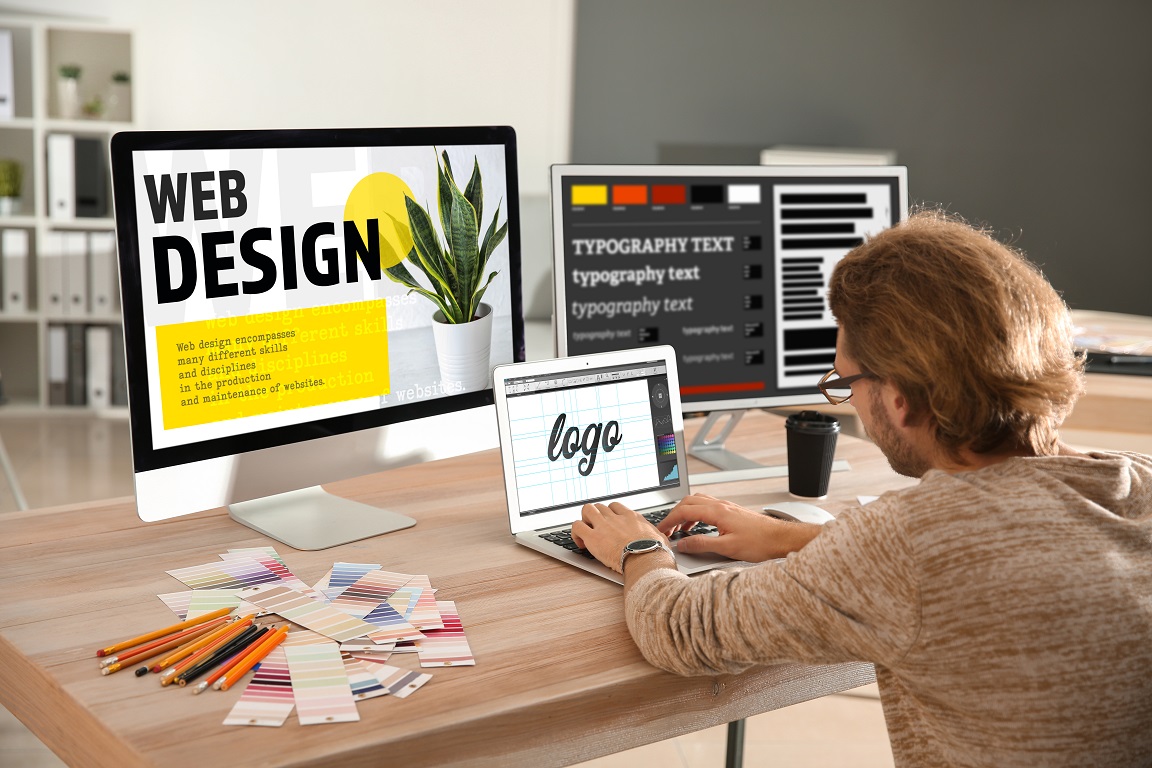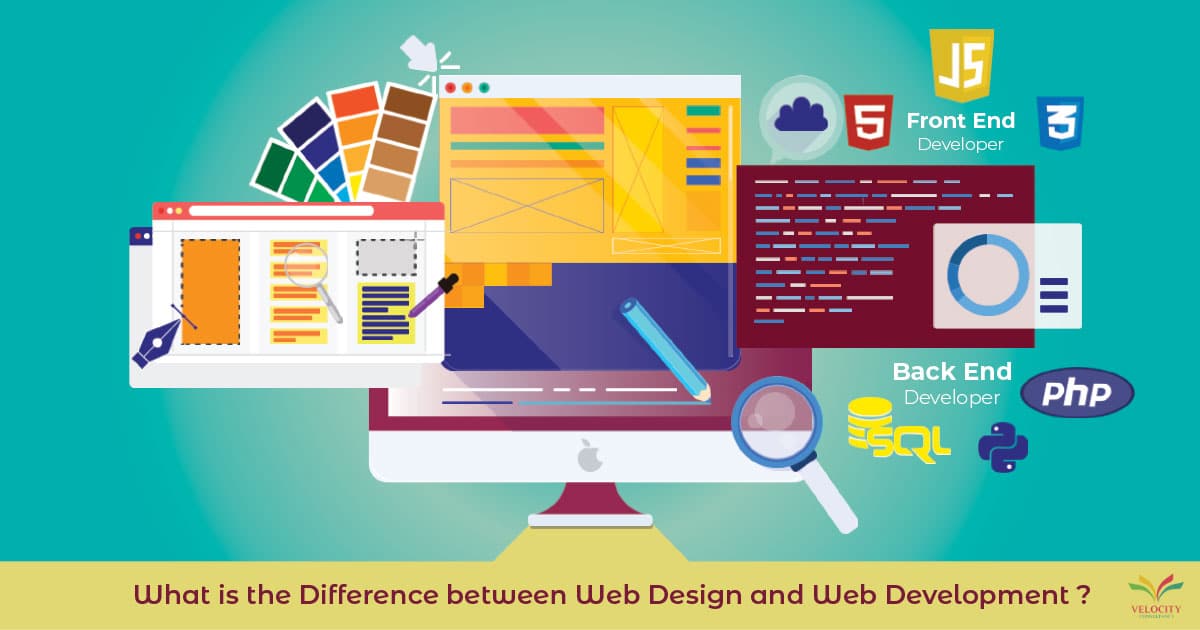Website Design London Ontario for Design-Focused and Digital Startups
Website Design London Ontario for Design-Focused and Digital Startups
Blog Article
Just How to Effectively Incorporate Appearances and Capability in Web Design
When developing a web site, you need to strike an equilibrium in between aesthetics and functionality. It's not just concerning looking great; your layout should also offer a function and overview customers successfully. By concentrating on simpleness and intuitive navigating, you can develop an interesting experience. However what components genuinely improve use while preserving visual allure? Allow's check out the essential principles that can cause an unified blend of appeal and function.
Understanding the Relevance of Looks and Performance
Recognizing the equilibrium in between visual appeals and performance is essential for producing a reliable user experience when you create a website. A visually enticing website grabs attention, but it's the functionality that maintains individuals involved. If your website looks wonderful but is hard to navigate, visitors will swiftly weary and leave.Consider your target market and what attracts them in. You intend to develop a style that reflects your brand while making sure simplicity of usage. Streamlined designs, user-friendly navigating, and clear contact us to activity can enhance both appearances and performance.

Concepts of Efficient Internet Layout
To produce a reliable web layout, you need to abide by a number of essential concepts that boost both individual experience and aesthetic appeal. Initially, prioritize simpleness; a tidy layout assists customers navigate quickly. Make use of a constant color design and typography to preserve coherence across your site. This cultivates knowledge and trust.Next, assure your layout is receptive. Users accessibility websites on various devices, so your layout must adapt effortlessly. Take note of aesthetic hierarchy; highlight important elements with positioning, shade, or size to direct individuals' focus.Finally, integrate adequate white space. It stops clutter and makes material much more digestible. Bear in mind, efficient website design balances looks and functionality, so every design selection ought to offer a purpose. By complying with these principles, you'll develop a website that's not only visually appealing however additionally straightforward, inevitably keeping site visitors involved and urging them to return.
Focusing On User Experience
When prioritizing customer experience, you'll desire to begin by understanding what your users genuinely need. Simplifying navigating design can make a massive distinction in how quickly they find what they're trying to find. Also, boosting aesthetic power structure assists lead their attention to the most important components on your site.
Understanding User Demands
Recognizing user demands is crucial for creating an interesting web experience that keeps visitors returning. To attain this, you need to recognize the objectives and choices of your target audience. Start by carrying out individual study, like interviews or studies, to collect insights on what customers value most. Focus on their discomfort points and obstacles when communicating with similar sites. This details enables you to tailor your layout, guaranteeing functionality lines up with customer assumptions. Furthermore, think about producing user characters that stand for various sectors of your target market, aiding you imagine their requirements during the design process. When you prioritize recognizing customer requirements, you develop a website that not only looks wonderful but additionally provides a seamless, enjoyable experience that cultivates commitment.
Simplifying Navigation Design

Enhancing Visual Hierarchy
A strong visual hierarchy is important in leading users with your web site and guaranteeing they involve with crucial content. To accomplish this, utilize spacing, size, and color purposefully. Make crucial components like headings larger and bolder than body message, drawing focus right away. Make use of contrasting shades to highlight calls to action, urging clicks. Additionally, use adequate white room to separate sections, making material digestible and inviting.Consider the circulation of info; organize components rationally, leading customers' eyes from one indicate the next. Use visual cues, like lines or arrows, to route interest. By focusing on aesthetic power structure, you enhance user experience and raise the chance of conversions, ensuring your website is both cosmetically pleasing and functionally reliable.
Shade Theory and Its Influence On Functionality
While choosing the ideal colors for your web site may look like a small detail, it considerably influences usability and customer experience. Color impacts just how users regard details and can boost or hinder navigating. For example, contrasting colors can aid vital components stand out, making it easier for site visitors to find what they need.Additionally, consider the psychology of colors: blue frequently inspires trust fund, while red develops urgency. Understanding your target market can lead your shade selections, ensuring they reverberate well.Moreover, consistent color pattern aid build brand identification, making your website much more remarkable. Nevertheless, beware-- too numerous colors can overwhelm users. Adhere to a minimal scheme that complements your web content and maintains clarity.Incorporating accessibility is also important; confirm your shade combinations are friendly for those with aesthetic impairments. By thoughtfully using color concept, you'll enhance functionality and create a much more appealing individual experience.
Typography: Balancing Style and Readability
Shade options set the stage for your site, however typography plays a just as vital role in boosting customer experience. You want your message to interact plainly while also reflecting your brand name's personality. Begin by picking font styles that are not only eye-catching but also legible. Sans-serif fonts often work well for digital screens, as they're much easier to read at various sizes.Maintain a power structure by using different typeface sizes and weights; this guides customers through your material effortlessly. Think about line spacing and letter spacing; as well limited can frustrate visitors, while as well loose can disrupt the circulation. Restriction your typeface options to two or 3 to keep the style cohesive.Finally, constantly check your typography across various gadgets and web browsers. What looks great on one screen might not on an additional. Stabilizing style with readability warranties that your message resonates, keeping your target market engaged and notified.
Responsive Style: Making Appearances Deal With All Tools
To guarantee your web site looks great on any device, you'll need to welcome receptive style concepts. This strategy warranties your website adapts to numerous display sizes, supplying a perfect customer experience. Start by utilizing liquid grids and flexible images that scale effortlessly. Rather of fixed measurements, choose percents and family member units, enabling your design to adjust dynamically.Next, execute media inquiries in your CSS. These let you use various styles based on tool characteristics, like display size. In this manner, you can keep aesthetic charm while ensuring functionality.Don' t fail to remember regarding touch targets; make particular buttons and links are easy to touch on smaller displays. Focus on vital content, so individuals can easily navigate your website no matter of their device. By concentrating on these components, you'll develop an engaging, aesthetically appealing experience that satisfies the demands of all individuals, whether they're on a desktop, tablet, or smart device.
Conducting Use Testing for Constant Improvement
To improve your website design, you need to establish clear use goals that align with individual demands. By conducting user tests, you can collect useful comments on how real individuals interact with your site. Assessing these outcomes will certainly assist you make notified improvements and produce a much more reliable individual experience.
Specifying Usability Goals
While visual appeals can draw individuals in, specifying usability objectives is essential for ensuring their experience continues to be rewarding and smooth. Start by recognizing what you desire individuals to accomplish on your site (website design london Ontario). Consider their actions, tasks, and requirements. Are they seeking details, buying, or registering for an e-newsletter? Establish clear standards to determine success, like task conclusion rates or time on job. Prioritize instinctive navigation, easily accessible material, and responsive layout to boost functionality. On a website design london Ontario regular basis revisit these objectives as individual assumptions evolve. By specifying functionality objectives, you produce a framework for evaluating and improving your website's performance. This emphasis on usability not just increases customer fulfillment but also strengthens the total performance of your design
Performing Individual Examinations
Performing user examinations is crucial for refining your web site and guaranteeing it meets your audience's demands. Begin by recognizing your target users and creating an examination strategy that outlines your purposes. Utilize a mix of measurable and qualitative approaches, such as surveys, meetings, and task-based monitorings, to gather thorough responses. Invite participants to navigate your site while you observe their interactions and keep in mind any kind of troubles they experience. Encourage open discussion to catch their ideas and feelings regarding the layout and capability. Keep sessions brief and concentrated, guaranteeing you cover key locations without frustrating individuals. Make sure to document all findings, as this information will be indispensable for making informed style choices that enhance both aesthetic appeals and functionality.
Analyzing Examination Outcomes
Exactly how can you successfully evaluate the results of your functionality tests to drive continual enhancement? Start by classifying feedback into usual motifs. Search for patterns in customer actions that highlight pain points or locations for enhancement. Use measurable information, like job completion prices and time on job, to measure functionality objectively. Do not forget to think about qualitative insights from individual comments; they commonly reveal underlying problems that numbers can't reveal. Focus on one of the most impactful findings and develop actionable products for your design group. Keep in mind, it's about repeating-- implement adjustments, after that examination again. This cycle of screening, assessing, and refining aids you equilibrium aesthetics and capability, ensuring your website fulfills customer demands properly while preserving visual appeal.
Often Asked Questions
How Do I Pick the Right Shade Combination for My Web site?
To select the best color scheme for your website, consider your brand name's character, target market, and emotional influence (website design london Ontario). Use color psychology, produce consistency, and guarantee readability. Test combinations to see what resonates finest with visitors
What Tools Can Assist With Web Style Appearances and Performance?
You can make use of tools like Adobe XD, Figma, and Lay out to boost your web style's visual appeals and performance. These systems use instinctive user interfaces, collaboration attributes, and pre-made layouts to enhance your innovative procedure and enhance your layouts.
Exactly How Can I Include Animations Without Jeopardizing Performance?
To integrate animations without jeopardizing capability, focus on subtle impacts that enhance user experience. Use CSS computer animations for smoother interactions, assurance quick tons times, and test on numerous devices to keep performance while adding visual appeal.
What Prevail Errors to Prevent in Internet Style Visual Appeals?
When designing, stay clear of cluttered designs, poor shade selections, and inconsistent typefaces. Don't forget mobile responsiveness, as it can push away customers. Verify your layout straightens with your brand name, developing a seamless experience that involves site visitors successfully.
Just how Typically Should I Update My Website's Style for Ideal Looks?
You ought to upgrade your website's style every 1-2 years to stay on par with fads and preserve ideal aesthetic appeals. On a regular basis renewing visuals assists engage site visitors and warranties your site remains appealing and user-friendly. When you develop a web site, understanding the balance between visual appeals and performance is crucial for creating an efficient user experience. To create a reliable internet layout, you require to adhere to a number of crucial principles that boost both individual experience and visual charm. Individuals gain access to web sites on numerous devices, so your layout ought to adapt effortlessly. When focusing on individual experience, you'll desire to begin by understanding what your users really need. Begin by conducting customer study, like studies or interviews, to collect understandings on what individuals value most.
Report this page